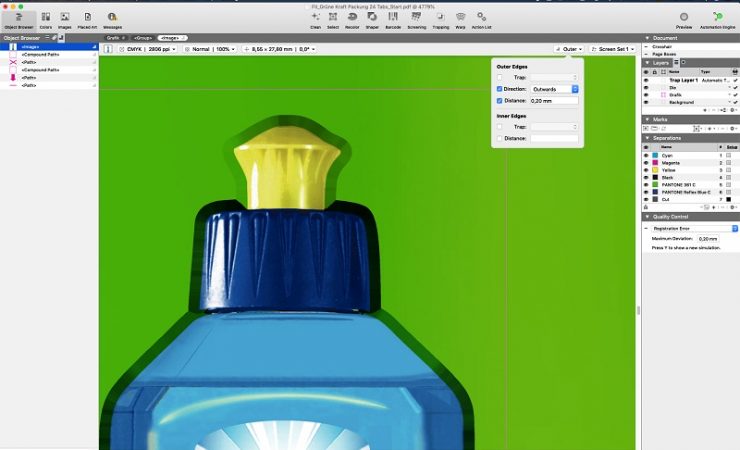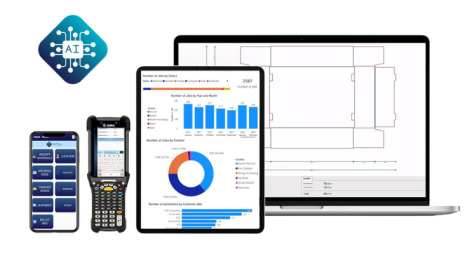Esko has released the latest update to its Software Platform, designed to bring ‘operational efficiency improvements’ to the packaging value chain.
v18.1 of Esko’s integrated software platform has made new functionality available to customers, including:
- ArtPro+, updated with a patented new trapping concept, expanded support for Action Lists and brand new Dynamic Marks;
- ArtiosCAD 18.1, featuring enhanced canvas layout, manufacturing tools, the latest DWG and spatial libraries, and new functionality in the ArtiosCAD Preflight module now including automatic fixing;
- Automation Engine, with a new ‘Optimize File’ task to simplify user experience, and new tasks exploiting the processing steps in a native PDF;
- Device manager in Automation Engine, a newly optimied merging algorithm to reduce flexo platemaking waste;
- Cape Pack, new online truck analysis giving greater functionality and savings potential; and
- Share & Approve, offering customised emails, a forward approval function and reporting on approval KPIs.
Esko stated the latest software updates, ‘all lead to greater accuracy, efficiency and consistency across a design and print workflow.’
Jan de Roeck, director of marketing, industry relations and strategy at Esko, said, ‘We are delighted to be making these updates available all at once, underlining our commitment to a fully integrated ecosystem of solutions and a commitment to our users, ensuring they enjoy continued support, benefits and updates when using Esko software. For example, our next generation native PDF editor for packaging pre-press, ArtPro+, now incorporates an innovative, object-based trapping feature that addresses one of the most time-consuming elements of packaging and label pre-press work. This patent-pending concept pushes the ‘right first time’ ratio to 70% and enables individual changes and enhancements to be made in a sustainable way.’
He continued, ‘Once you’re on board with an Esko workflow, you will enjoy continued support along the ride, each update bringing significant benefits, and those using several tools in an integrated workflow should expect to be stunned by the massive combined improvements to their workflow.’






